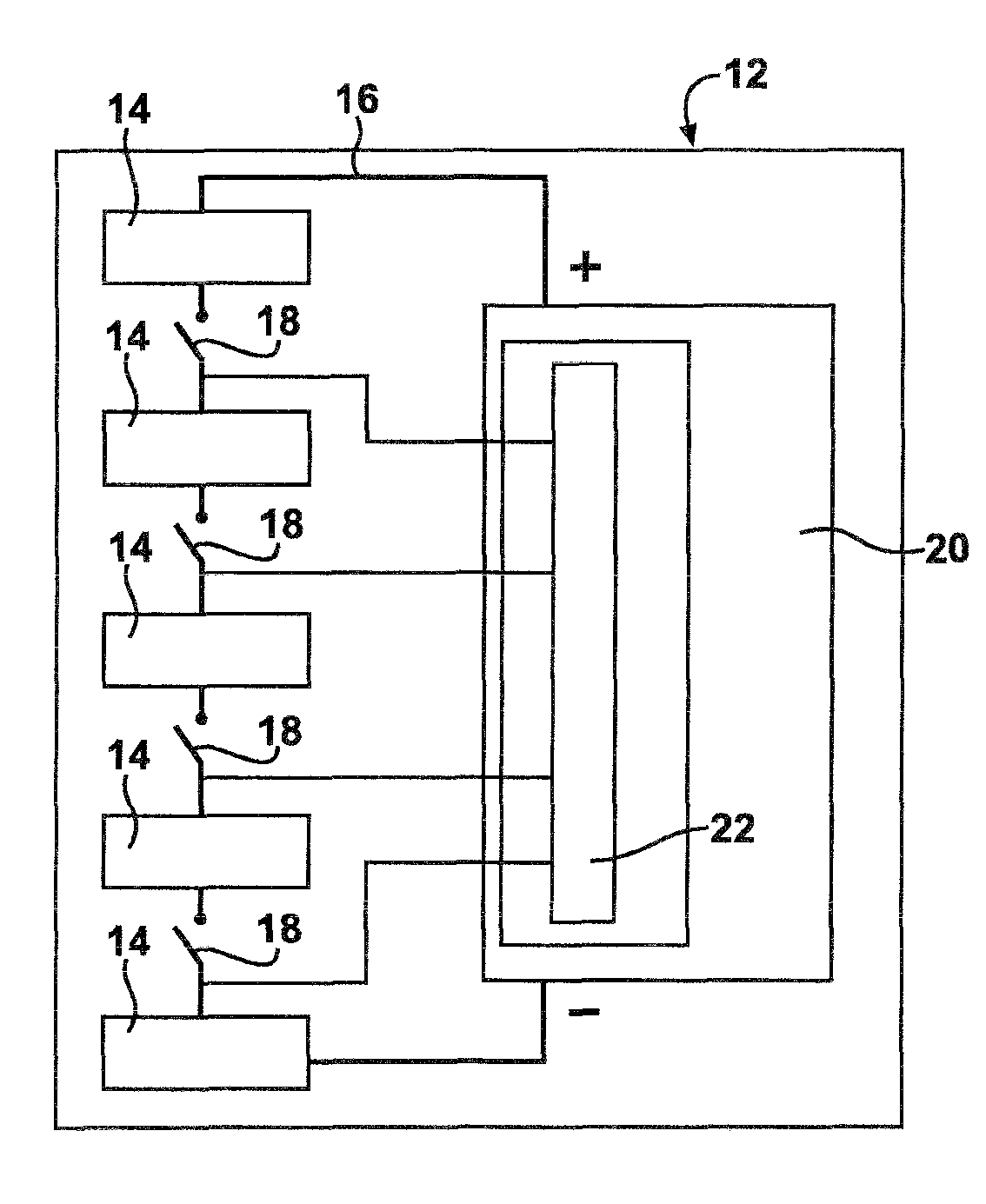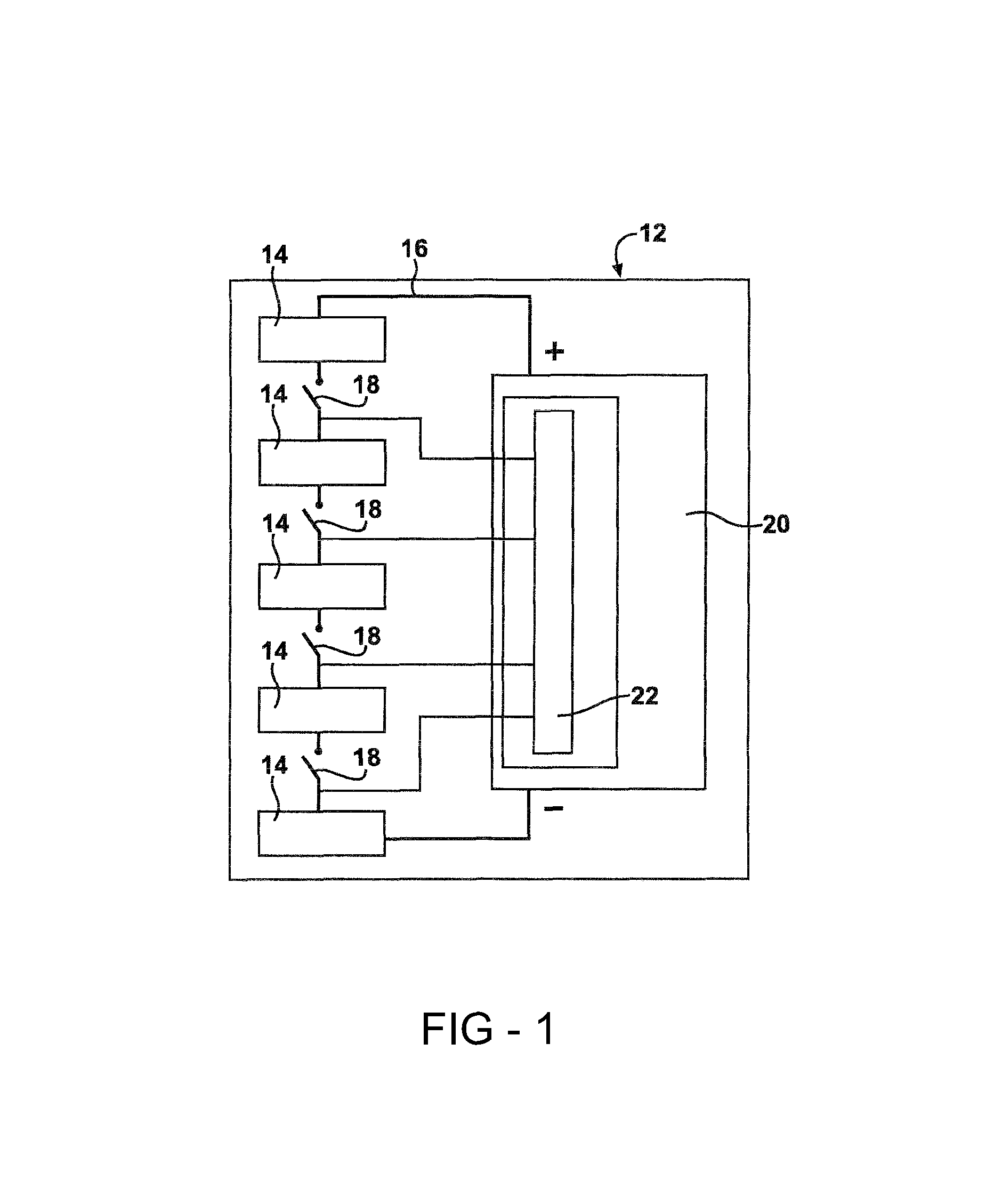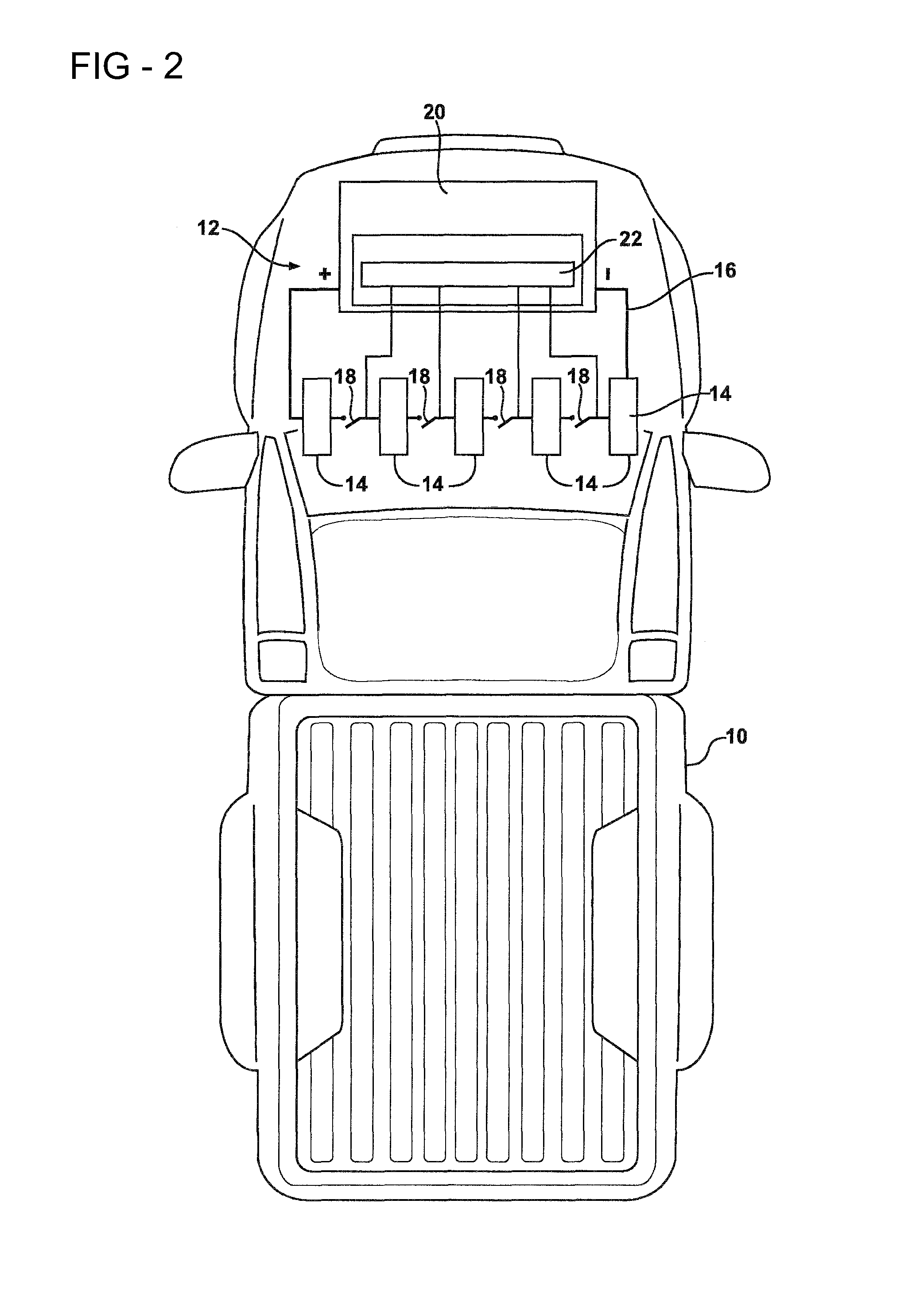Lithium titanate cell with reduced gassing
a technology of lithium titanate and cell, which is applied in the direction of alkali titanates, cell components, sustainable manufacturing/processing, etc., can solve the problems of less than ideal power generation capacity of lisub>4/sub>tisub>5/sub>osub>12/sub>, and the excess of battery weigh
- Summary
- Abstract
- Description
- Claims
- Application Information
AI Technical Summary
Benefits of technology
Problems solved by technology
Method used
Image
Examples
examples
[0082]Lithium titanate of the present invention having the formula Li4Ti5O12−x is formed according to the method of the invention as set forth above. More specifically, conventional Li4Ti5O12 is first formed by forming a mixture including titanium dioxide and a lithium-based compound. The mixture is formed by introducing the titanium dioxide and the lithium-based compound into a vessel in the amounts shown in Table 1. The titanium dioxide and the lithium-based compound are mixed and milled in a ball mill for a period of about 60 minutes at least 150 rpm rotation speed using a particle size distribution measurement till particle size less than 5 μm, more preferably less than 2 μm, with unimodal distribution to ensure sufficient mixing of the titanium dioxide and the lithium-based component. The mixture is then sintered in a gaseous atmosphere, created by a gas or gas mixture with constant flow at temperatures and times as indicated in Table 1. The gas or gas mixture includes a reduci...
example 1
Gas Generation Comparison
[0098]This example evaluates the differences in gas generation between cells produced using conventional forming techniques and those produced using the techniques described herein. The comparative cell utilizes a standard electrolyte of composition 1.2M LiPF6 in EC / PC / EMC [25 / 5 / 70], while the inventive cell utilized a modified electrolyte of composition 1.2M LiPF6 in EC / PC / EMC [25 / 5 / 70]+0.5% LiBOB+5% Phosphazene. In addition, the comparative cell is formed using a cycling process where the cell is cycled in the normal voltage range 1.6-2.9 V. In contrast, the inventive cell is overcharged during the formation process to a state where the anode potential drops below 0.5V, thereby forming a passivation layer on the anode by reduction of the additives added to the electrolyte. The composition and formation processes of the comparative cell and the inventive cell are described in Table 3, below:
[0099]
TABLE 3Comparative CellInventive cellElectrolyte:Electrolyte:...
PUM
| Property | Measurement | Unit |
|---|---|---|
| voltage | aaaaa | aaaaa |
| operating voltage | aaaaa | aaaaa |
| voltages | aaaaa | aaaaa |
Abstract
Description
Claims
Application Information
 Login to View More
Login to View More - R&D
- Intellectual Property
- Life Sciences
- Materials
- Tech Scout
- Unparalleled Data Quality
- Higher Quality Content
- 60% Fewer Hallucinations
Browse by: Latest US Patents, China's latest patents, Technical Efficacy Thesaurus, Application Domain, Technology Topic, Popular Technical Reports.
© 2025 PatSnap. All rights reserved.Legal|Privacy policy|Modern Slavery Act Transparency Statement|Sitemap|About US| Contact US: help@patsnap.com



